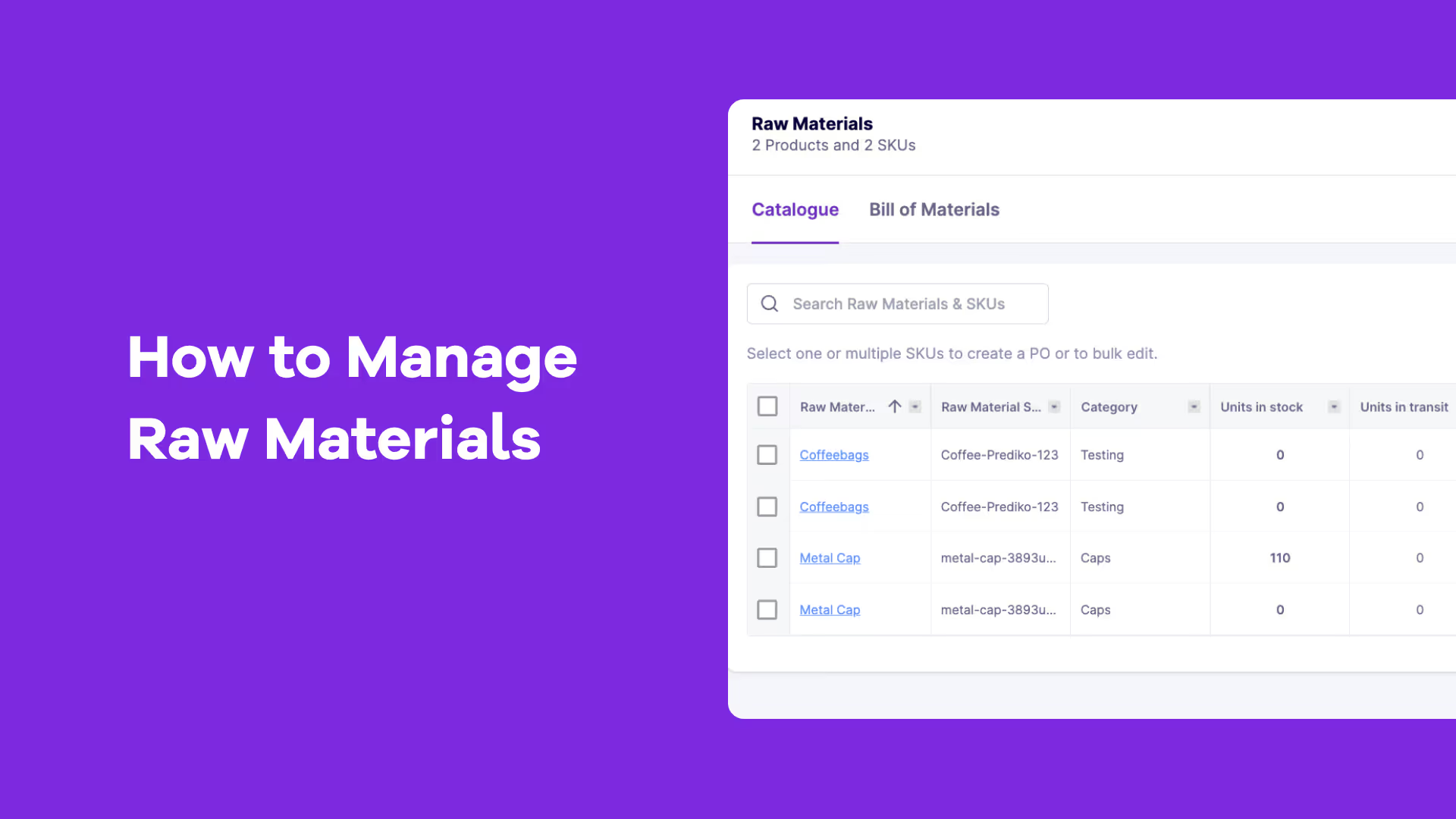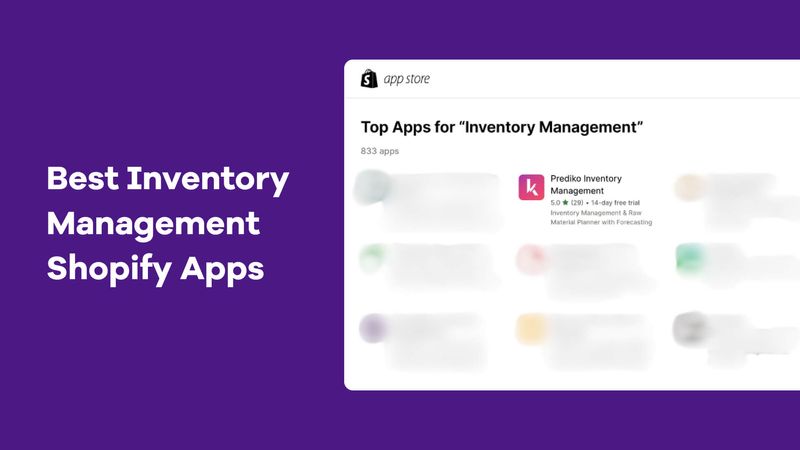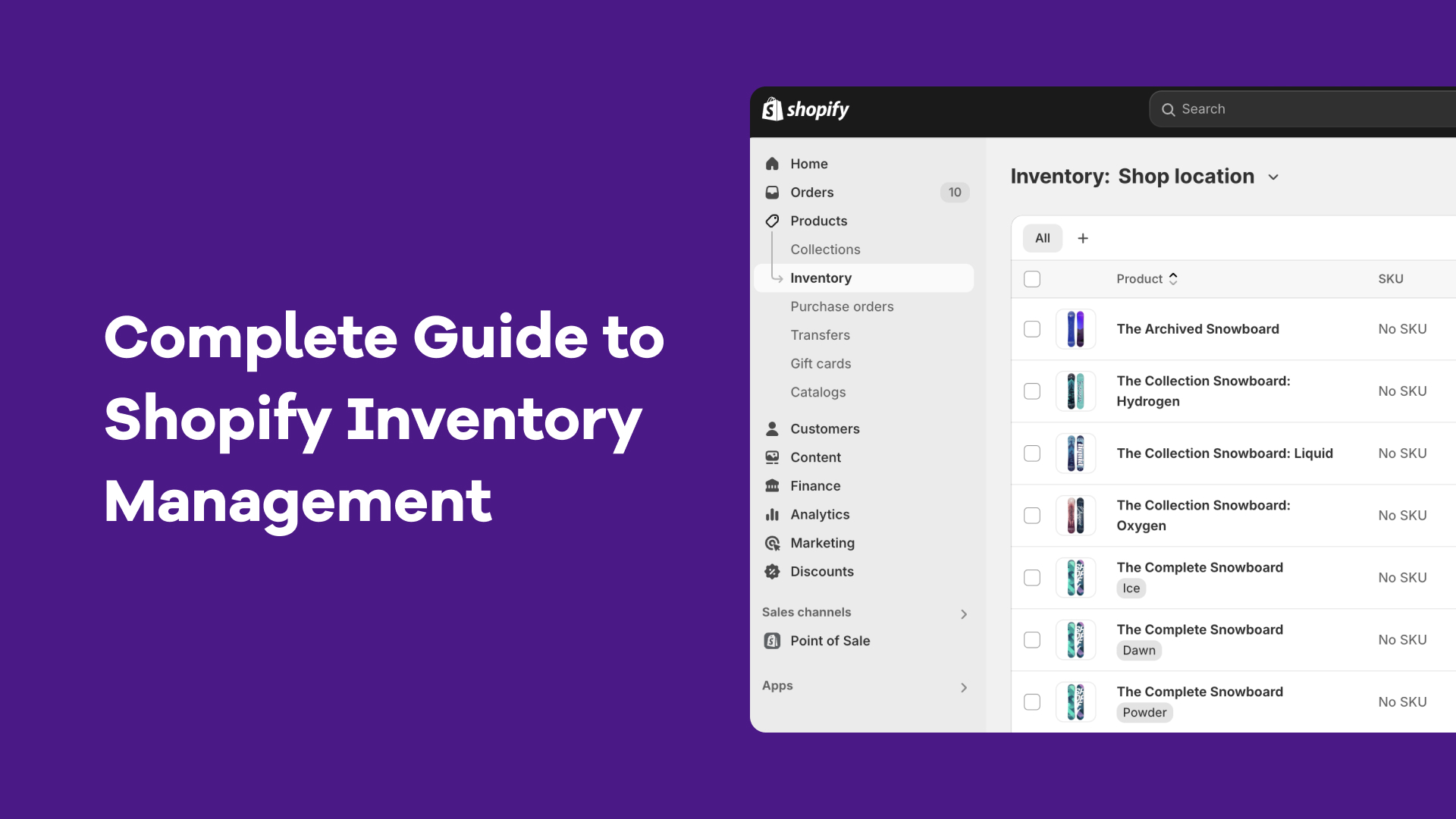Best Practices for Raw Material Management for Shopify Brands
Adopt best practices to help you achieve optimal raw material inventory management and prevent common pitfalls. Here are a couple of strategies:
1. Regularly review and adjust inventory levels
Regularly review your inventory levels to help identify trends, such as seasonal demand fluctuations or changes in production rates. Adjust inventory levels accordingly to ensure that you always have the right amount of raw materials on hand. This approach helps in maintaining balance between supply and demand.
If you're still unsure which inputs should be tracked as direct raw materials vs. general supplies, we’ve shared this in our post on how to find direct raw materials used in D2C brands.
Prediko's predictive analytics tools enable you to forecast demand accurately and adjust raw material inventory levels in real time, thereby reducing risk of stockouts or excess inventory.
2. Create, manage and track raw materials within Prediko’s Shopify app
- First step is to create all your raw materials within Prediko’s Shopify app.

- Import raw materials using the Import function
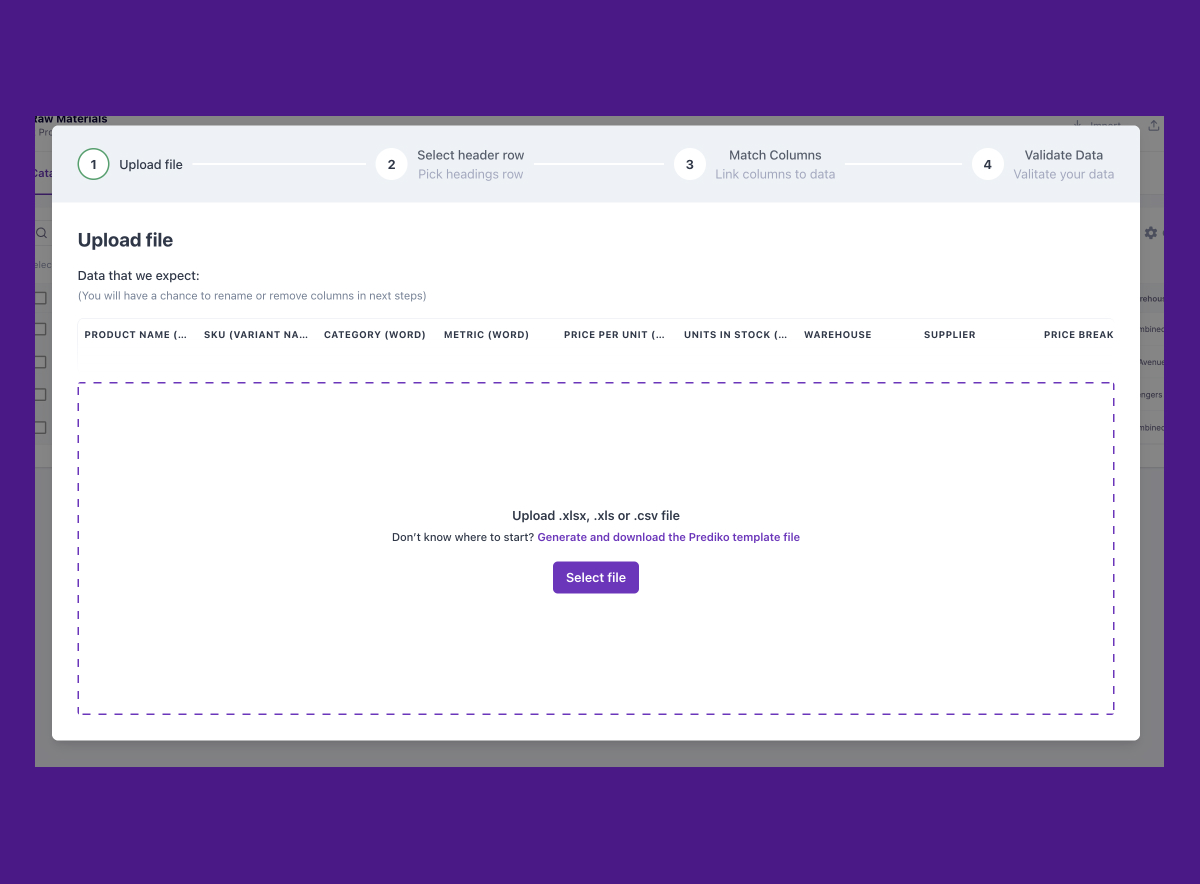
- See entire catalogue of your raw materials within Prediko
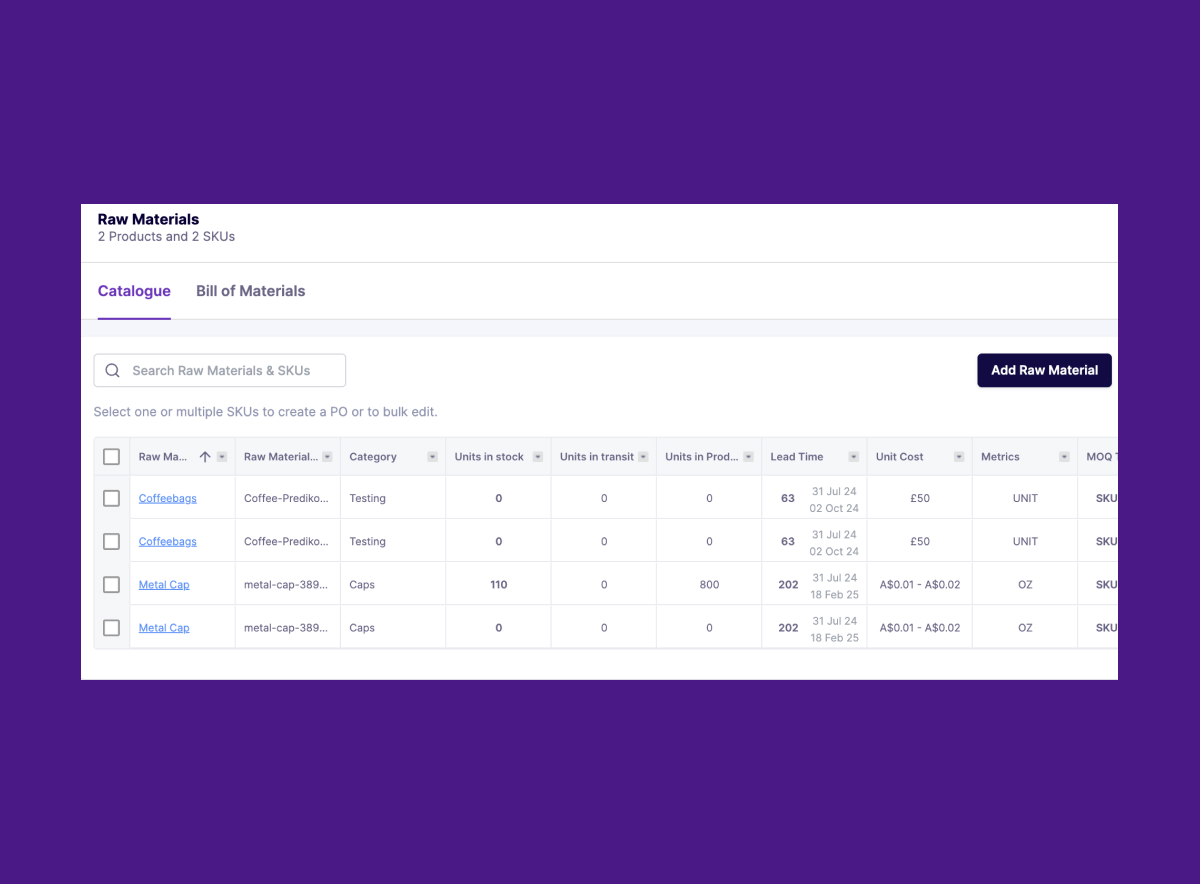
- Create and track Bill of Materials (BOM) for D2C & B2B brands

3. Conduct regular audits
Periodic audits of your inventory helps in verifying the accuracy of your records and identifying discrepancies. This involves physical counts of materials or cycle counting, where a subset of inventory is counted regularly.
Regular audits ensure data integrity and help in identifying and addressing any issues promptly.

4. Collaborate with suppliers
Build strong relationships with suppliers to improve communication and lead to better terms and more reliable deliveries. Sharing production schedules and inventory levels with suppliers helps them anticipate needs and reduce lead times.
Collaboration also leads to more favourable pricing and priority service during high-demand periods.
During Covid-19 pandemic, businesses faced significant supply chain disruptions. The pandemic highlighted the importance of having strong supplier relationships and robust communication channels. Companies invested in these areas were able to navigate shortages and delays.
Prediko facilitates easier supplier collaboration by providing an interface where you can see all your suppliers, lead time and currency details.

One can easily enhance supply chain resilience, ensuring operations remain smooth even during unforeseen disruptions.
5. Strategic material sourcing
Material sourcing is a critical aspect of raw material management. It involves identifying, evaluating, and procuring materials from suppliers. The goal is to secure high-quality materials at the best possible price. But it's not just about cost. Timeliness, reliability, and supplier relationships also matter. Strategic sourcing can help you balance these factors. It can lead to better supplier partnerships, improved quality, and cost savings.
6. Selecting right suppliers
Choosing the right suppliers is a critical step. It's not just about who offers the lowest price. Consider factors like quality, reliability, and delivery times. Also, assess the supplier's financial stability and reputation. A good supplier is also a valuable partner. They help you navigate market changes and ensure a steady supply of materials.
7. Diversification of supply sources
Relying on a single supplier can be risky. Any disruption in their operations impacts business. Diversifying supply sources mitigates this risk. It ensures steady supply of materials, even if one supplier faces issues. Diversification also gives you more bargaining power. It helps negotiate better prices and terms.
8. Negotiating terms and prices
Negotiation is a key skill in material sourcing. It's not just about getting the lowest price. Consider other factors like payment terms, delivery schedules, and MOQ. Also, discuss contingency plans for supply disruptions.
Remember, negotiation is a two-way street. Aim for a win-win outcome that strengthens the relationship with the supplier.
9. Train Staff
Proper employee training ensures that staff understands the importance of accurate inventory management and are familiar with the systems and processes in place. This reduces errors and improves overall efficiency. Well-trained staff are equipped to handle inventory-related tasks, leading to smoother operations and fewer disruptions.especially when using material inventory management software that integrates across teams.



